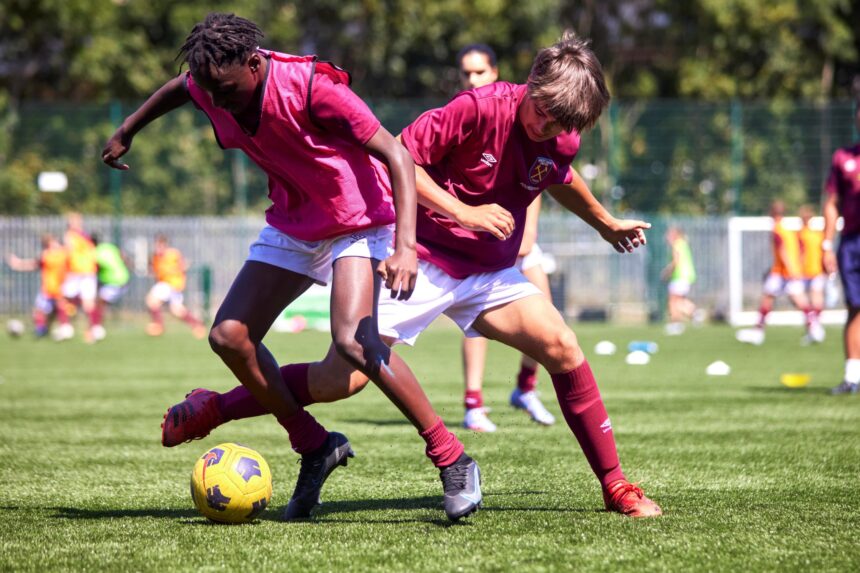Sports scholarships have become a cornerstone of higher education, offering talented athletes a unique pathway to pursue their academic and athletic dreams. These scholarships provide financial relief, personal development opportunities, and a chance to compete at elite levels. However, they also come with challenges and strict eligibility requirements. This article delves into the intricacies of sports scholarships, exploring their benefits, application processes, and broader implications.
What Are Sports Scholarships?
Sports scholarships are financial aid programs awarded to students based on their athletic abilities. They help cover tuition fees, housing, books, and other college-related expenses. Unlike merit-based scholarships focused on academic achievements, sports scholarships prioritize athletic performance while often requiring students to maintain minimum academic standards.⁷..
Benefits of Sports Scholarships
Sports scholarships offer a range of advantages that extend beyond financial relief:
-
Financial Relief: Scholarships reduce the financial burden of college education by covering tuition and other expenses 7.
-
Personal Development: Athletes gain leadership skills, teamwork experience, and discipline through rigorous training and competition.
-
Academic Incentives: Many programs encourage athletes to maintain strong grades alongside their sports commitments.
-
Networking Opportunities: Athletes can connect with industry professionals, scouts, and sponsors, paving the way for future career opportunities.
-
Career Prospects: Scholarships often serve as stepping stones to professional sports careers or roles in coaching and sports management.
-
Exposure: College sports teams provide visibility to scouts and sponsors, enhancing an athlete’s chances of advancing in their sport.
ALSO READY: Everything You Need To Know About Ontario Graduate Scholarship (OGS) 2024
Eligibility Criteria
Eligibility for sports scholarships varies by institution and country but generally includes:
-
Academic Requirements:
-
Minimum GPA thresholds.
-
Passing standardized tests like the SAT or ACT.
-
Submission of essays or applications demonstrating commitment.
-
-
Athletic Performance:
-
Exceptional skills in a particular sport.
-
Participation in competitions that attract college scouts.
-
-
Institutional Requirements:
-
Acceptance into the university or college.
-
Compliance with NCAA or NAIA regulations in the U.S., or equivalent bodies elsewhere.⁶⁷..
-
Types of Sports Scholarships
Sports scholarships differ based on the governing body and level of competition:
NCAA Division I & II Scholarships
-
Division I schools offer full scholarships primarily for high-profile sports like football and basketball.
-
Division II schools provide partial scholarships for a broader range of sports.²⁶..
NAIA Scholarships
-
Comparable to NCAA Division II in terms of competition level.
-
Offers fewer scholarships but maintains high standards for athletes.
Division III Schools
-
Focus on academic merit rather than athletic scholarships.
-
Extracurricular activities like sports are considered during admissions.
International Scholarships
-
Opportunities exist for international students to compete in U.S. colleges or other global institutions.
-
These scholarships often require both athletic excellence and academic competence.
Challenges in Securing Sports Scholarships
Despite their benefits, obtaining a sports scholarship is highly competitive:
-
Limited Spots:
-
Only 2% of high school athletes secure full scholarships.
-
High-profile sports dominate funding allocation.
-
-
Gender Disparities:
-
Female athletes benefit from Title IX regulations but face fewer opportunities in certain sports compared to male counterparts.².
-
-
Balancing Academics and Athletics:
-
Athletes must juggle rigorous training schedules with academic responsibilities, which can be overwhelming.
-
-
Injury Risks:
-
Physical injuries can jeopardize scholarship continuity and career prospects.
-
RELATED POST>> Understanding Dow Jones Stock Futures: A Comprehensive Guide
>>>>> Dadeschools: A Comprehensive Guide to Excellence in Education
Application Process
Securing a sports scholarship requires strategic planning and dedication:
-
Excel in Your Sport:
-
Participate in competitions that attract scouts.
-
Build a strong athletic resume showcasing achievements.
-
-
Contact Coaches:
-
Reach out to college coaches directly to express interest.
-
Provide video highlights and performance statistics.
-
-
Meet Academic Standards:
-
Maintain good grades to meet eligibility requirements.
-
Submit standardized test scores as required by the institution.
-
-
Understand Scholarship Types:
-
Research schools offering full or partial scholarships for your sport.
-
Consider factors like competition level and geographic location .
-
The Global Landscape of Sports Scholarships
United States
The U.S. dominates the sports scholarship landscape with extensive NCAA programs:
-
Football and basketball receive the majority of funding due to their revenue-generating potential.
-
Individual sports like track & field offer fewer full scholarships but remain competitive.126.
United Kingdom
In the UK, sports scholarships are available across various universities:
-
Academic requirements must be met alongside athletic performance.
-
Opportunities exist for undergraduate, postgraduate, and international students.
Canada
Canadian institutions typically offer partial scholarships:
-
Full scholarships are rare unless the athlete is exceptionally talented.
-
Emphasis is placed on balancing academics with athletics.
Ethical Considerations
The allocation of sports scholarships has sparked debates about fairness:
-
Academic Standards:
-
Elite schools sometimes lower admission standards for athletes, raising concerns about equity among applicants.
-
-
Revenue Distribution:
-
College sports generate significant revenue, yet athletes often receive limited compensation beyond free education.
-
-
Gender Equality:
-
Title IX has improved opportunities for female athletes, but disparities persist in funding allocation between men’s and women’s programs.
-
Conclusion
READ MORE ABOUT THIS POST>> College grants ; complete details
Sports scholarships play a vital role in shaping the futures of talented athletes while contributing to the diversity and prestige of educational institutions. They offer financial relief, personal growth opportunities, and pathways to professional careers. However, aspiring student-athletes must navigate challenges such as intense competition, balancing academics with athletics, and ethical dilemmas surrounding scholarship distribution.
By understanding the nuances of sports scholarships—ranging from eligibility criteria to application strategies—students can maximize their chances of success while contributing positively to the collegiate athletic ecosystem.







